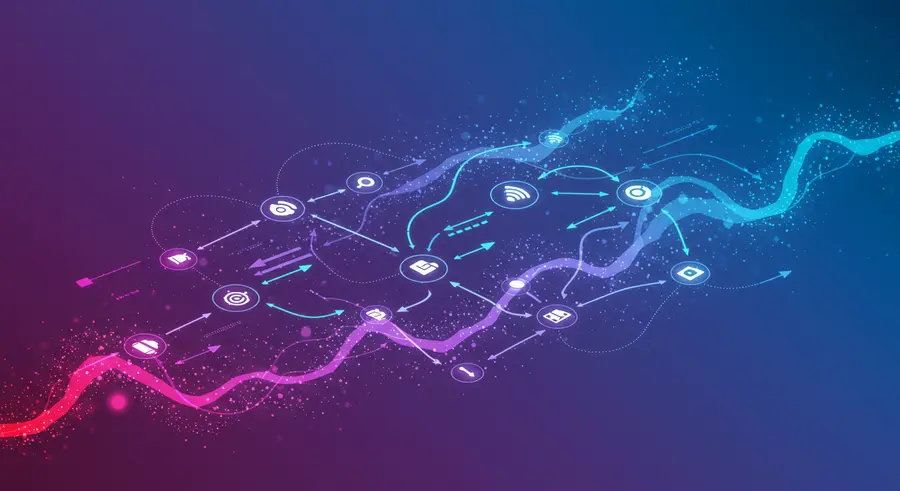Appearance

Welcome, fellow innovators! 👋 In the rapidly evolving landscape of cloud computing, Serverless Architectures have emerged as a game-changer, allowing developers to build and run applications without managing servers. But how do we truly unlock the power of serverless for highly scalable, resilient, and responsive systems? The answer often lies in Event-Driven Architectures (EDA).
What is Event-Driven Architecture?
At its core, EDA is a software design paradigm where loosely coupled services communicate by publishing and consuming events. Instead of direct calls between services, an event (a record of something that happened) is emitted, and other services interested in that event can react to it.
Why pair it with Serverless? Serverless functions (like AWS Lambda, Azure Functions, Google Cloud Functions) are inherently event-driven. They are designed to execute code in response to specific events, such as a file upload to a storage bucket, a new message in a queue, or an API request. This natural synergy makes serverless platforms ideal for implementing EDAs.
Key Benefits of Event-Driven Serverless Architectures:
- Scalability: Each serverless function scales independently based on the volume of events it needs to process. This means your application can handle massive spikes in activity without over-provisioning resources.
- Resilience: Services are decoupled. If one service fails to process an event, it doesn't necessarily bring down the entire system. Events can be retried, or error handling mechanisms can kick in.
- Agility & Decoupling: Teams can develop and deploy services independently, fostering faster development cycles and reducing dependencies.
- Cost-Effectiveness: You only pay for the compute time consumed when your functions are actively processing events, leading to significant cost savings compared to always-on servers.
Common Event-Driven Serverless Patterns and Real-World Use Cases:
Let's dive into some practical patterns and see how they translate into real-world applications:
1. Data Processing Pipelines 📊
- Pattern: A file is uploaded to an S3 bucket (event). This triggers a Lambda function (consumer) to process the file (e.g., resize an image, convert a video, extract data).
- Use Case:
- Netflix: Handles hundreds of file submissions daily, each needing encoding and processing. Serverless functions triggered by file uploads manage this complex pipeline efficiently.
- IoT Data Ingestion: Devices send telemetry data to an event stream (like Kinesis or Kafka), which triggers serverless functions for real-time analytics, anomaly detection, and storage.
2. Asynchronous API Endpoints 🚀
- Pattern: An API Gateway receives a request, which then sends a message to a queue (e.g., SQS) or a stream (e.g., Kinesis). A serverless function asynchronously processes this message, perhaps updating a database or calling an external service, and then sends a notification or updates a status.
- Use Case:
- Order Processing: When a customer places an order, an API endpoint accepts the request, puts it into a queue, and immediately responds to the user. A backend serverless function then processes the order (inventory check, payment, shipping), potentially triggering further events for each step.
- Long-Running Operations: Any operation that takes more than a few seconds (e.g., report generation, complex calculations) can be offloaded to an asynchronous serverless function to prevent API timeouts and improve user experience.
3. Real-time Analytics & Notifications 📈
- Pattern: Events from various sources (user activity, system logs, sensor data) are streamed to a central event bus (e.g., EventBridge). Serverless functions subscribe to specific event types to perform real-time analytics, trigger alerts, or send notifications.
- Use Case:
- Fraud Detection: Financial transactions generate events. Serverless functions analyze these events in real-time, flagging suspicious activities and triggering immediate alerts or actions.
- User Engagement: When a user completes an action (e.g., signs up, makes a purchase), an event is published. Other services can then trigger personalized emails, push notifications, or update user profiles.
4. Event Sourcing 💾
- Pattern: Instead of storing just the current state of an application, event sourcing stores a sequence of events that led to that state. Each event is immutable and appended to an event log. Serverless functions can "replay" these events to reconstruct the current state or derive new insights.
- Use Case:
- Auditing and Compliance: Provides a complete, immutable history of all changes, which is crucial for compliance and debugging.
- Complex Business Workflows: Manages complex workflows where the exact sequence of operations is critical and needs to be auditable.
Best Practices for Event-Driven Serverless Architectures:
- Idempotency: Design your functions to be idempotent, meaning they can be called multiple times with the same input without causing unintended side effects. This is crucial for handling retries in event-driven systems.
- Dead-Letter Queues (DLQs): Configure DLQs for your serverless functions to capture events that fail processing. This allows you to inspect and reprocess failed events, preventing data loss.
- Observability: Implement robust logging, tracing (e.g., using AWS X-Ray, OpenTelemetry), and monitoring. Understanding the flow of events through your distributed system is vital for debugging and performance optimization.
- Event Schema Versioning: As your application evolves, so will your event schemas. Plan for schema versioning to ensure backward compatibility and smooth transitions.
- Small, Single-Purpose Functions: Keep your serverless functions small and focused on a single responsibility. This enhances reusability, testability, and scalability.
- Choose the Right Event Source: Select the appropriate event source (e.g., SQS for reliable queuing, SNS for fan-out messaging, Kinesis for real-time streaming, EventBridge for routing events) based on your specific needs.
Conclusion:
Event-driven serverless architectures offer a powerful paradigm for building modern, scalable, and resilient applications. By embracing events as the primary means of communication, you can unlock significant advantages in terms of agility, cost-effectiveness, and maintainability.
Want to learn more about Serverless? Check out our detailed article on Demystifying Serverless Architectures for a foundational understanding.
Happy coding, and may your events always flow smoothly! ✨